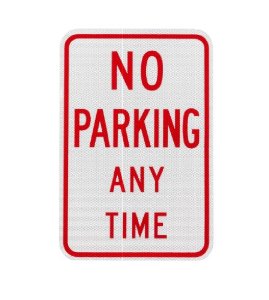Real Estate Litigation
Governmental Power and Property Lines

On May 27, 2014, the Colorado Supreme Court issued its opinion in Town of Dillon v. Yacht Club Condos. Home Owners Ass’n, 2014 CO 37. Overturning the rulings of both the trial court and the Colorado Court of Appeals, the Colorado Supreme Court reaffirmed the long-standing deference Colorado law shows to state legislative bodies exerting their police powers. This opinion reminds Colorado property owners that property rights and interests end at the property line and no one should rely on the ability to use public land around their property in the future.
Between 1965 and 1967, a developer constructed the Yacht Club Condominiums in Dillon, Colorado, consisting of three buildings and fifty condominium units. Id. at ¶ 5. During this time, the Town of Dillon wanted to require the developer to provide off-street parking at the condominium complex. Id. However, the developer opposed this requirement, relying on the prior Colorado Supreme Court opinion City & County of Denver v. Denver Buick, Inc., 141 347 P.2d 919 (Colo. 1959), which held that a zoning ordinance requiring landowners to provide off-street parking was per se unconstitutional as a taking of property without just compensation. Id. Since its construction, the Yacht Club Condominiums has used the wide roads in front of its property to allow for resident parking. Id. at ¶ 6. The width of the roads allowed cars to park perpendicular to the front of the condominiums, still allowing enough room on the street for traffic to pass. See id. at ¶ 6. During times of high occupancy, residents would double-park cars, one directly behind the other. Id.
Over forty years later, the Town of Dillon enacted two municipal ordinances in 2009. Id. at ¶ 1. While one authorized a local road improvement project, the other expanded the Dillon Municipal Code’s definition of “street” to include “the entire width of every dedicated public right-of-way owned or controlled by the Town.” Id. at ¶¶ 7–8. The ordinance expanding the definition of “street” also “ratif[ied] and affirm[ed] the previously granted and current authority of the Town of Dillon Chief of Police to determine and designate those streets and rights of way within the Town where parking shall be prohibited.” Id. at ¶ 8. After enactment of these statutes, Dillon’s Chief of Police posted “No Parking” signs on the roads in front of the condominiums and painted “No Tandem Parking” on the road. Id. No similar signage appeared anywhere else in the town. Id.
Importantly, Yacht Club Condominiums had no ownership in the portions of “street” regulated by the ordinances. Id. at ¶ 23. Therefore, it had no claim that the ordinances took property from Yacht Club Condominiums without due process of law or just compensation. Id.
Yacht Club Condominiums proceeded to file suit against the Town of Dillon, seeking a declaratory judgment that equitable estoppel barred the Town of Dillon from eliminating the on-street parking of the residents and that the actions taken to eliminate the on-street parking constituted an abuse of police power. After Yacht Club Condominiums received favorable rulings in both the trial court and the Colorado Court of Appeals, the Colorado Supreme Court granted certiorari to determine “[w]hether the Town of Dillon’s enactment of Ordinance Nos. 04-09 and 10-09 was an unconstitutional exercise of the Town’s police power to regulate matters of public health, safety, and welfare.” Id. at ¶ 3 n.1.
In the lower courts, the analysis of whether the Town of Dillon’s actions constituted an abuse of its police power included weighing the burden the ordinances placed on Yacht Club Condominiums, the availability of less burdensome alternatives, and the nature of the problem being addressed against the health, safety, and welfare gains the ordinances sought to achieve and the likelihood of the ordinances to achieve these gains. Id. at ¶¶ 20–21. Both lower courts held that the ordinances were an abuse of police power that violated Yacht Club Condominiums’ due process rights. Id.
In stark contrast to the several factor analysis conducted by the lower courts, the Colorado Supreme Court applied a standard rational basis analysis, determining only if the ordinances were rationally related to a legitimate government interest. Id. at ¶ 32. This analysis left no room for consideration of the burden on Yacht Club Condominiums to now provide parking elsewhere on property abutted by a public road and a lake, the fact that this parking “arrangement” had been in place for nearly half a century, or that other options existed to remedy the same concerns the ordinances sought to address. Instead, the Colorado Supreme Court found that the parking prohibition was reasonably related to the Town of Dillon’s goals of curing unsafe driving conditions caused by having double-parked cars pull out into oncoming traffic, improving drainage, and reinstating a portion of recreation path for bicyclists and pedestrians. Id. at ¶ 46.
The Colorado Supreme Court’s unanimous opinion relied on strongly worded precedent regarding the ability of a government to enact legislation for the general welfare of its citizens. For example, under Colorado law, “municipal ordinances are presumed to be constitutional, and the party challenging an ordinance bears the burden to prove its unconstitutionality beyond a reasonable doubt.” Id. at 22 (citing People ex rel. City of Arvada v. Nissen, 650 P.2d 547, 550 (Colo. 1982); City of Leadville v. Rood, 600 P.2d 62, 63 (Colo. 1979); Love v. Bell, 465 P.2d 118, 121 (Colo. 1971)). As well, the Colorado Supreme Court noted that municipalities may use their police powers to enact measures that “increase [residents’] labor, decrease the value of [residents’] property, or otherwise inconvenience individuals” so long as such measures satisfy the rational basis test. Id. at ¶ 28 (quoting In re Interrogatories of the Governor on Chapter 118, Sess. Laws 1935, 52 P.2d 663, 667 (Colo. 1935). In refusing to consider more reasonable or less burdensome alternatives to the ordinances, the Colorado Supreme Court “made clear that [it is] not concerned with the wisdom of the particular method chosen by the governing body to address a perceived danger so long as the method chosen reasonably relates to the end to be achieved.” Id. at 31.
Given the high burden of proof placed upon challengers to municipal ordinances and the low threshold for a governmental body to point to any possible rational relationship between the act taken and the “proper legislative object sought to be attained,” id. at ¶ 26, the outcome of Town of Dillon reaffirms an important reality for Colorado real property owners and litigators alike: ownership rights and interests end at the property line. A governmental enactment may be unforeseen; it may burden your ability to use your property; and it may decrease your property value. However, if the enactment is rationally related to achieving a legitimate governmental interest, its effects on you and your property are collateral damage of no consequence to the state. Therefore, any use of public land around a property must be done with an understanding that one cannot rely on the ability to use this same land in the future.





















